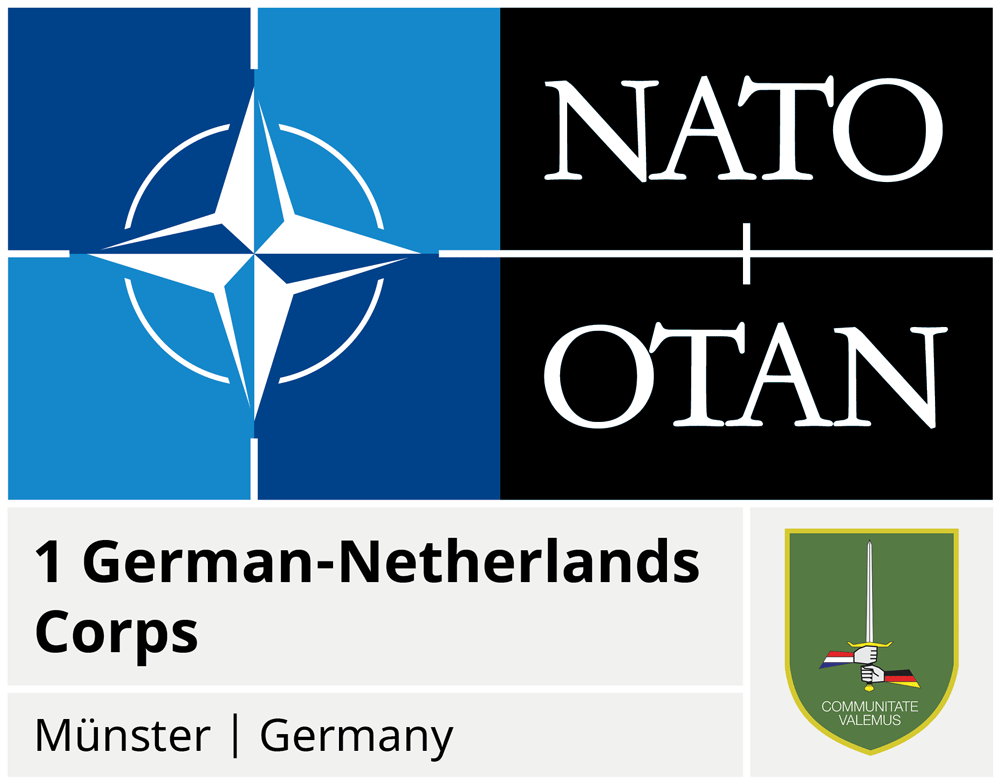History
In 1991 the defence ministers of The Netherlands and Germany decided to establish a binational Headquarters to replace one German Corps Headquarters and one Dutch Corps Headquarters. In 1993 a treaty between the two countries was signed which resulted in two previously independent Headquarters being amalgamated to form 1 German-Netherlands Corps HQ, consisting of one German and one Dutch division.
I German Corps had previously consisted of 1st Panzer Division, 3rd Panzer Division, 7th Panzer Division, 11th Panzergrenadier Division, and 27th Airborne Brigade. After the end of the Cold War, various corps troops, such as Air defense command 1, Pioneer command 1 and Medical command 1 were dissolved in September 1993. For the I Corps Headquarters itself the plans saw first of all that it should be amalgamated in Mönchengladbach with the Territorial Northern Command. However, new considerations to multinational units meant that the German I. Korps Headquarters was disbanded in August 1995, being merged into the 1 German-Netherlands Corps.
The corps’ readiness for action was achieved on August 30, 1995, and celebrated in the presence of the Dutch Prime Minister Wim Kok and the German Chancellor Helmut Kohl. The headquarters were chosen to be in Münster because Münster was already the location of the I German Corps’ headquarters. On top of that it was chosen due to the particular significance for both countries as the place where the Peace of Westphalia was signed.
In 1997, Germany and the Netherlands laid down the cooperation in several documents. In general, these state that Germany and the Netherlands provide the Corps framework on an equal basis; both countries share the responsibility for command & control capabilities. In 2002, the Corps met NATO Full Operational Capability criteria and was certified to act as a High Readiness Force Headquarters capable of rapid deployment as part of a NATO Combined Joint Task Force. Since 2002, the multinational Corps HQ has been based on a Memorandum of Understanding between 12 NATO nations.
The original tasks of the corps lay in the defence of the territories of NATO member states as part of NATO’s main defence force as well as taking part in peacekeeping missions, humanitarian missions and emergency aid during natural disasters.
Soon after its Final Operational Capability, the corps was given new tasks: it was designated “Forces Answerable to the Western European Union”, and since December 1999, the corps is a Land Component Command within NATO’s command structure. At this time its subordinated divisions were the 1st German Panzer Division from Military District Command II in Hannover, and the Netherlands 1st Division 7 December, a mechanised infantry formation stationed in Apeldoorn.
At the same time, the transition to a multinational unit began, which included considerable issues in organisational psychology between the two forces. After concluding exercise “Cannon Cloud” at the Baumholder training area in November 2002, the corps became a “High Readiness Forces (Land) Headquarters” (HRF(L) HQ) as part of NATO’s Combined Joint Task Force (CJTF). The first deployment within this framework took place between February and August 2003 when the corps operated as ISAF’s headquarters in Afghanistan.(HQ ISAF-3), following the command periodes of the United Kingdom (ISAF-1) and Turkey (ISAF-2).
